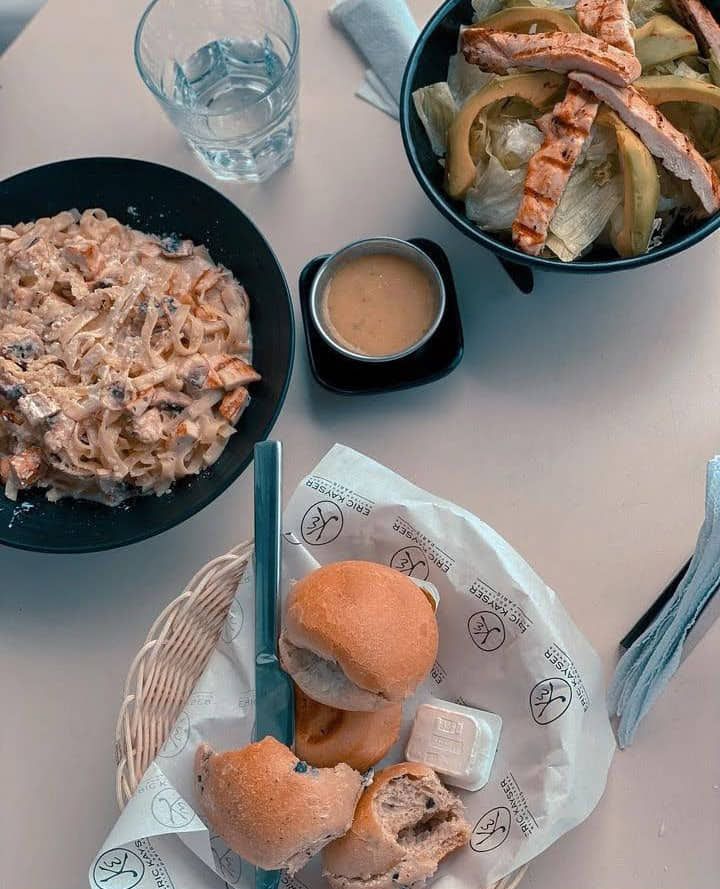
Understanding dietary beliefs and behaviors is key to developing dietary advice, nutrition programs and educational information. This study aims to understand the beliefs and practices of pregnant women and the reasons for this among the present-day Kalenjin rural communities of Uasin Gishu County, Kenya. The Yoruba people are one of the largest ethnic groups in Nigeria. These people have developed culture including food. Most Yoruba food is a combination of different colors of food, it's always good to see, this is how Yoruba people eat, they like the combination of how to cook and eat. many things about Yoruba culture.
Loye ăn gbagbo ijẹunjẹ ati awọn ihuwasi jẹ bọtini si idag asoke imọran ijẹẹmu, awọn eto ijẹẹmu ati alaye eto-ẹkọ. Iwadi yii ni ero lati ni oye awọn igbagbọ ati awọn iṣe ti awọn aboyun ati awọn idi fun eyi laarin awọn agbegbe igberiko Kalenjin ti ode oni ti Uasin Gishu County, Kenya. Àwọn Yorùbá jẹ́ ọ̀kan lára àwọn ẹ̀yà tó tóbi jù lọ ní Nài Jira. Awọn eniyan wọnyi ti ni idag asoke aṣa pẹlu ounjẹ. Opolopo ounje yoruba je adapo oni ruuru ounje, o maa dara lati riran, bayi ni awon Yoruba maa n je, won feran apapo bi won se n se ati je. opolopo nkan nipa asa ile Yoruba.

Most foods are eaten with the bare hands (fingers), although some foods may be eaten with a piece of paper. It is common for Yoruba people to sit on the ground to eat, especially in the villages, but in the villages, food is eaten on the dining table due to modernization. The Yoruba people believe that it is not good to talk while eating; the reason is that Yoruba people eat a lot of spicy food. There is a famous proverb in Yoruba that says: “A soul that does not eat pepper is a helpless soul. The reason for this proverb is that other tribes in Nigeria do not eat pepper like the Yoruba, so if someone asks me why I eat pepper, I will answer with a proverb.
Pupọ awọn ou nhẹ ni a jej pelu ọ ọ igboro (awọn ika ọwọ), botilẹ ẹpe diẹ ninu awọn ou nhẹ le jẹ pẹlu iwe kan. Ó wọ́pọ̀ fún àwọn Yorùbá láti jókòó sorí ilẹ̀ látigo jẹun, pàápàá ní abúlé, ṣùgbọ́n ní abúlé, oúnjẹ ni wọ́n ń jẹ lórí tábìlì jíjẹ nítorí òde òní. Àwæn Yorùbá gbà pé kò dára ká máa sðrð bí a bá jÅun; ìdí ni pé Yorùbá máa ń jẹ oúnjẹ aládùn púpọ̀. Òwe olókìkí kan wà ní Yorùbá tí ó sọ pé: “Ọkàn tí kò bá jẹ ata, ẹ̀mí aláìnílọ́wọ́ ni. Idi ti won fi n pa owe yii ni pe awon eya miran ni Naijiria ki i je ata bi awon Yoruba, bi enikan ba bi mi leere pe kilode ti mo fi je ata, a o fi owe dahun.

Another reason why Yoruba people do not talk while eating, from what I have observed, is because Yoruba people like to eat together from one plate. Traditionally, everyone in the family sits around and eats food together from the same bowl. It is believed that if you talk while eating, you will spit out the liquid and food indirectly.
Common Yoruba foods include: eba (cassava flour), amala (yam flour), iyan (flour), gari, asaro, brown and white beans, rice, plantain, potatoes. Soups include: gbegiri, ewedu, tomato stew, okra, efo riro (vegetable soup). Popular Yoruba meats include chicken, goat, beef, and "game" (animals killed while hunting).
Idi miran ti awon Yoruba ki i soro lasik ti wón n jeun, lati inu oshun ti mo ti woye, ni pe awon Yoruba feran lati jeun papo lati inu awo kan. Ni aṣa, gbogbo eniyan ninu idile joko ni ayika wọn jẹ ounjẹ papọ lati inu abọ kanna. O gbagbo pe ti o ba sọrọ lakoko ti o jẹu, iwin yoo trọ omi ati ounjẹ ni aiṣe-taara.
Awọn ounjẹ Yoruba ti o wọpọ ni: eba (iyẹfun agbala), amala (iyẹfun iṣu), iyan (iyẹfun), gari, asaro, ewa brown ati funfun, irish, ọgbagba, potato. Awọn ọbẹ pẹlu: gbegiri, edu, ipẹ tomati, okra, efo riro (ọbẹ ewe). Eran Yoruba ti o gba baja ni adie, ewurẹ, eran malu, ati “ere” (awọn ranko ti won pa nigba ti wọn n ṣọdẹ).

Eba is prepared by pouring a lot of garri (fine or hard cassava flour) into a little boiling water (depending on the type of eba you want to make) and stirring with a wooden spatula until will make garri paste. You can add more water and stir if you want it to be softer or a little stronger. The fish will then be cooked on a plate and eaten with soup. How to Prepare Fo Riro (Vegetable Soup)
Eba ti wa ni pese sile nipa a da ọpọlọpọ garri (tianran tabi lile iyẹfun cassava) sinu omi farabale die-die (da lori iru eba ti o fẹ lati se) ati riru pẹlu kan onigi spatula titi yoo fi garri lẹẹ. O le fi omi diẹ kun ati ki o ru ti o ba fẹ ki o rọ tabi diẹ ni okun sii. Ao se eja na sori awo kan ao je pelu obe. Bi o ṣe le Ṣetan Fun Riro (Ọbẹ Webe)

, put 1 cup of beans in a large pot, put over the corn, drain the oil for 5 minutes, add the sliced onion and cook it until it is soft, they are -yellow color. Add red pepper, onions and scotch bonnet pepper, then add some mixed crawfish, shaved fish and cooked meat (goat or beef). Cover and simmer for 10-25 minutes, let the palm oil float to the surface when the source is ready. Finally add vegetables (spinach, or any type of vegetable), fry for another 3 to 5 minutes.
, ao ko ewa 1 sinu ikoko nla kan, ao wa sori agbado na, ao gbe epo naa sita fun iceju 5, ao wa po alubosa ti a ge, ao se o titi yoo fi ro, won wa - awọ feefee. Fi ata pupa kun, alubosa ati scotch bonnet ata, lẹhinna fi ẹja crawfish adalu diẹ, ẹja ti a fari ati ẹran ti a ti jinna (ewurẹ tabi ẹran malú). Bo ki o simmer fun iṣẹju 10-25, jẹ ki epo ọpẹ lee fofo loju omi si oju nigbati orisun ba ti ṣetan. Nikẹhin fi awọn ẹfọ kun (owo, tabi eyikeyi iru ẹfọ), din-din fun iṣẹju 3 si 5 mien.
Hi, @artfricavas,
Thank you for your contribution to the Blurt ecosystem.
Your post was picked for curation by @onchain-curator.
Please consider voting for our Upkeep Proposal by Symbionts.